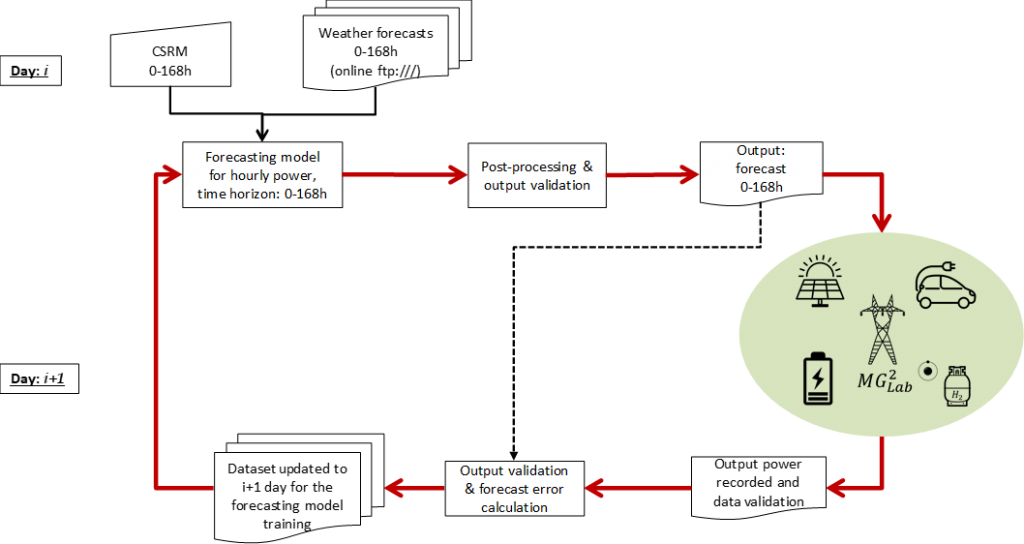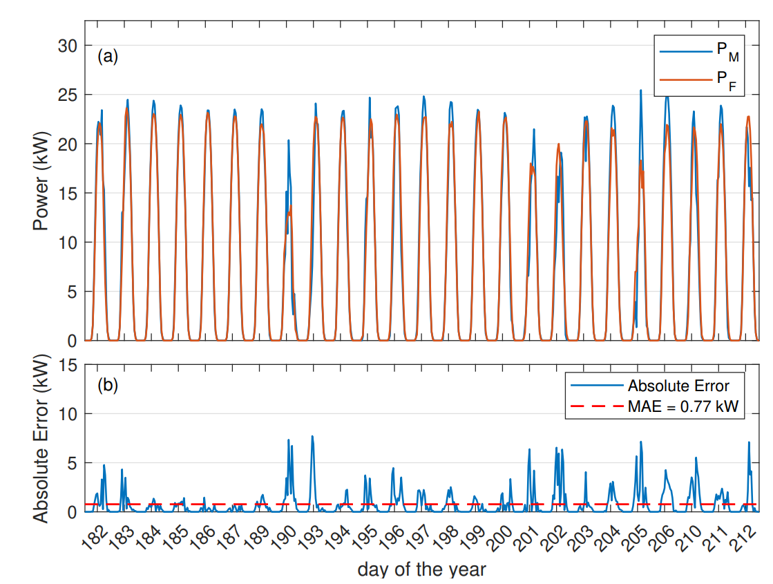The power uncertainty exhibited by many Renewable Energy Sources (RES) as PV and wind represents a huge challenge for the stability, security, and reliability of integrated electricity systems.
PV power fluctuations depend on two factors: the first one is deterministic due to Earth’s revolution around the Sun, while the second is stochastic and depends on atmospheric conditions as cloud cover, dust, pollution, or local shadows on PV modules.
In this frame, forecasting power production from RES can greatly help the management and the operation of modern energy systems as microgrids. In this applications, advanced cost effective microgrid design and an optimal dispatch strategy can be developed to reduce the dependence on costly and polluting traditional sources, to increase the use of RESs and reduce the needs of large storage systems and conventional backup generation, but at the same time to guarantee adequate electricity reliability and power quality.
A key issue in the identification of the optimal dispatch strategy provided by a central Energy Management System (EMS) is the RES forecasting.
Day ahead:
In order to provide the 24 hours ahead power forecast, the methodology applied is here fully summarized in the logic scheme of the Figure, showing in a circular way different sub-tasks of the forecasting process at two times (i.e., Day i and Day i + 1). The process is divided into blocks, and each block accomplishes a specific task.
The forecasting model applied represents the core of the process. It is based on a Physical Hybrid Artificial Neural Network (PHANN), introduced and refined in previous offline works (SolarTech Lab).
The developed forecasting engine consisted of an ANN, trained with historical weather forecasts collected, coupled with the solar radiation under clear-sky condition (CSRM), and an accurate output of the hourly profile expected by the PV plant was generated for the next seven days.
After the output was generated, data had to be validated by a post-processing step consisting of checking the reliability of the output.
Nowcast:
Due to the intrinsic variability of the solar resource, the growing contributions of photovoltaic plants to the overall power generation challenges the stability of electricity grids. Knowing the level of irradiance and the following power production in the near future can be greatly beneficial to properly operate the PV fields, support the operation, increase the reliability of the grid, and finally increase the efficiency of the overall electrical system.
In order to perform the nowcast, an algorithm based on the time series analysis is currently running on the microgrid. Moreover, several more accurate methodologies are under studies, from machine learning to image processing techniques. In the following video it is possible to see the sun position detection through a blend several methodologies that lead to an accurate and fast determination on the images acquired by the available camera.


